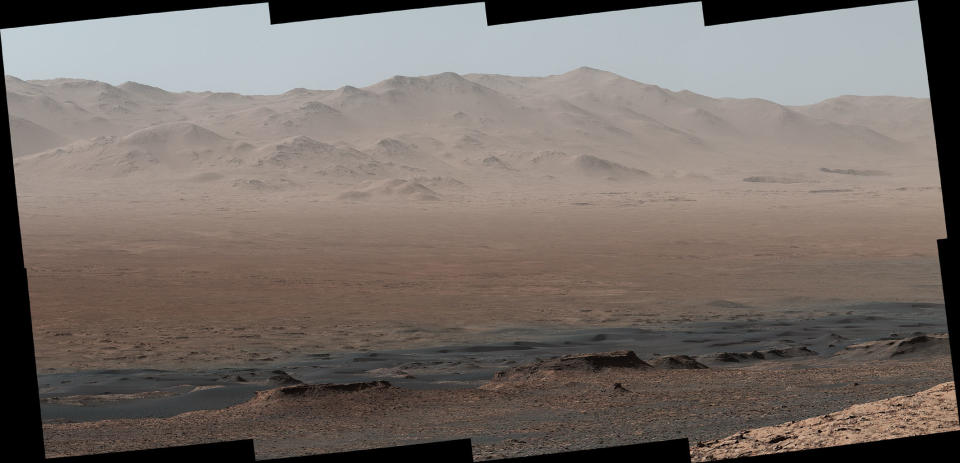NASA Mars rover captures incredible panorama showing its five-year journey
NASA’s Mars Curiosity rover has captured an incredible panorama from a mountain ridge, showing the bleak, dusty Martian landscape the robot has explored for five years.
The panorama was captured from Vera Rubin Ridge on the north flank of Mount Sharp – and shows most of the 11 mile route the rover has driven since 2012.
One hill on the northern horizon is about 50 miles away, but most of the scene’s horizon is Gale Crater’s northern rim, roughly one-third that distance away and 1.2 miles above the rover.

Curiosity’s Mast Camera, or Mastcam, took the component images of the panorama three months ago while the rover paused on the northern edge of Vera Rubin Ridge.

Mount Sharp stands in the middle of Gale Crater, which is 96 miles in diameter.
‘Even though Curiosity has been steadily climbing for five years, this is the first time we could look back and see the whole mission laid out below us,’ said Curiosity Project Scientist Ashwin Vasavada of NASA’s Jet Propulsion Laboratory, Pasadena, California.

‘From our perch on Vera Rubin Ridge, the vast plains of the crater floor stretch out to the spectacular mountain range that forms the northern rim of Gale Crater.’
MOST POPULAR ON YAHOO UK TODAY
Teenager, 18, who repeatedly raped woman at gunpoint in ‘twisted tag team’ jailed for 20 years
Don’t Tell The Bride couple DON’T get married for first time in show’s history
Bentley driver caught breaking 20mph tells speeding volunteers he’ll report THEM to police
‘Manipulative’ benefits fraudster, 51, claimed up to £500k by pretending to be quadriplegic
Theresa May has been given a surprisingly adorable nickname during her visit to China
Mystery of Jack the Ripper letters may finally have been solved as ‘similarities’ are found
The rover photographed the scene shortly before northern Mars’ winter solstice, a season of clear skies, gaining a sharp view of distant details.
Curiosity’s exact landing spot on the floor of the crater lies out of sight behind a slight rise, but the scene includes ‘Yellowknife Bay.’
That’s where, in 2013, the mission found evidence of an ancient freshwater-lake environment that offered all of the basic chemical ingredients for microbial life.
Farther north are the channel and fan of Peace Vallis, relics of the streams that carried water and sediment into the crater about three billion years ago.

 Yahoo News
Yahoo News 

